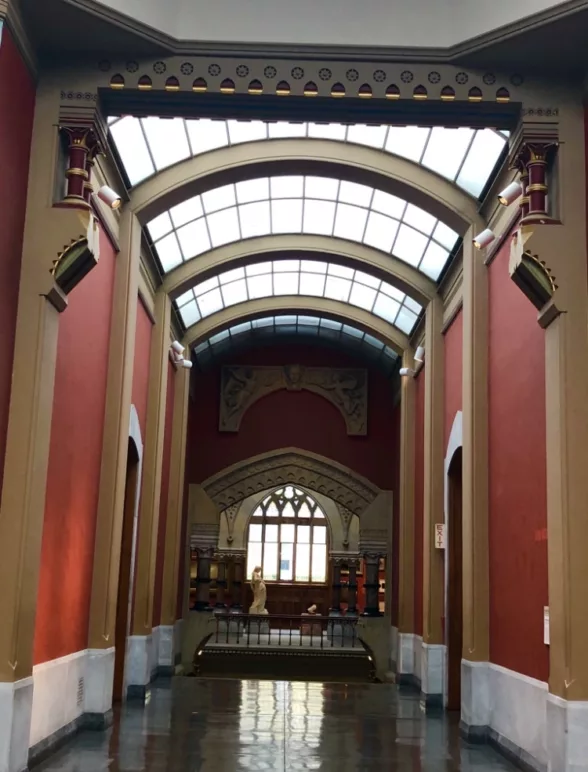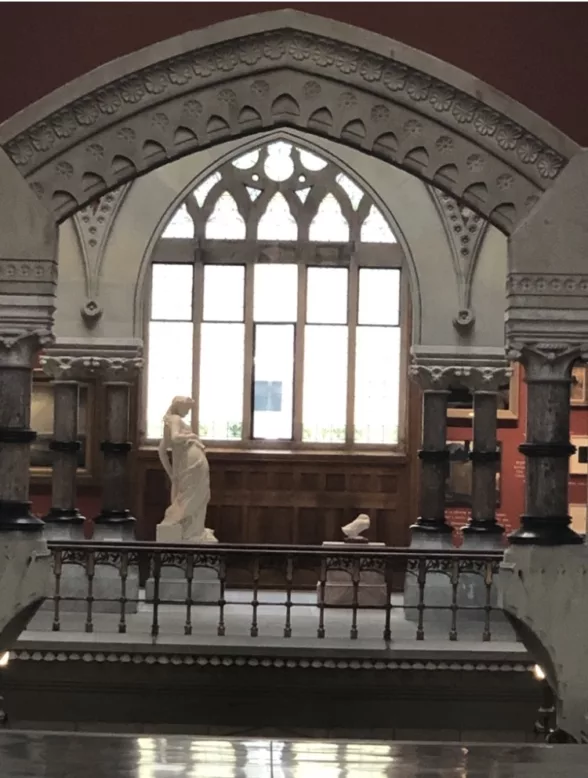
During my five vital years at the first museum and school in the United States— the Pennsylvania Academy of the Fine Arts (PAFA)— as both a grad student and employee, I witnessed resident faculty and visiting critics shape artists. They taught the profound importance of learning the old traditionalist techniques and breaking rules that didn’t benefit an individual’s practices.
At PAFA, it was easy to fall in love with our respective mediums and the art of others and become both besotted and inspired. Unexpected friendships were formed between peers, professors, and critics. We were nurtured in a way that some of our parents and guardians could not possibly fathom. I valued the post baccalaureate program, that eclectic quadrant of Neysa Grassi, Michael Moore, Jan Baltzell, and Mark Blavat, pushing us into our respective practices. We sought aid from our studio neighbors or floor leaders or searched the halls for people like Steven Connell, Brian Boutwell, Brian Duffy, or Gregory Martino. During our short two years in the MFA program, my BFF and I were always looking forward to compassionate studio visits with Jennifer Packer and Abigail DeVille.

On occasion, PAFA felt more home than school. Timeless moments included David Lynch pocketing a pink bra someone threw at him after his talk with Bob Cozzolino; students working long nights in rented installation rooms to build dreamy works that expanded beyond their studios; students hugging distraught friends after brutal critiques; eighth and seventh floor gatherings, drawing in the Cast Hall, crowded walks to the Vox building on First Fridays, and second semester seminar classes putting on improv theatre based on fairy tales.
PAFA’s abrupt decision to dissolve the BFA, MFA, and post baccalaureate programs seemed unreal news, an outright abandonment of upcoming high school graduates, maturer artists, future teachers, and so much more. PAFA’s move was shocking because it not only imperils those hopeful prospects standing in the post-contemporary artist line but it shoved the faculty, students (many in the middle of their programs), and graduates into catastrophic situations that affected them physically, emotionally, and financially. This once-highly regarded institution is now stained by these events.
Months later, the Philadelphia artist community remains hurt and will likely never heal.
Three former professors
Three former professors shed eye-opening light on what happened last fall. These quotes below are from my email and phone call exchanges with them.
Eileen Neff, artist and writer; former Resident Critic in the MFA Program from 2004-2024
“I had heard rumors about troubles at PAFA, but had no idea that the degree programs would be canceled. The faculty was never engaged in any conversation and only learned about it when the rest of the community did. We were shocked and disheartened, just presented with the aftereffects of the institutional decisions. The students and faculty were equally dismayed with how it was handled. The last term was hard, as everyone’s life had been upended, making our focus on the work very difficult. Every critique involved talking about how the students might go forward. The halls felt like a morgue. The sense of loss permeated beyond the halls. The MFA program at its peak had many stellar faculty. In our intimate setting we formed many important bonds—what one can hope for from a graduate program. It was valuable and deserved to be saved.”
Tom Csaszar, artist, writer and educator who taught on the graduate faculty from 2001 to 2024
“I first learned of PAFA’s closures in an email from a friend who had read the Philadelphia Inquirer. Although startled, I was not surprised. [During the] faculty meeting in the late fall, the dean announced his resignation. There was no mention then of any enrollment figures for the coming year and no visible or concerted action to enroll students from the acting admissions officer. My last class was the fall of 2023. I had no direct contact with students in the classroom after the announcement was made.“PAFA plans to reduce its professional education to a Certificate program—[a program that closed eight years ago] a restart after several years of pause. It remains to be seen how this will play out, facing severe challenges of reestablishing how it fits into a 21st century art world. The educational programs have been a unique place for learning and for teaching the fundamental and the essential skills, concepts, and material expression of art making.
“When I studied at the University of Pennsylvania in 1971, I asked my professor about the other art schools in Philadelphia. The response I got about PAFA was, ‘It’s the best 19th century art school in the area.’ I think that this simple description stated its value to the community and an aspect of its limitations. I was disappointed when they announced the closure of the Certificate program as I valued all of PAFA’s educational programs. I thought they each had a role in visual arts education. It was pointed out that the program could meet the then current federal guidelines by reducing its tuition by $800, but this was dismissed.
“With the closing of PAFA’s degree granting programs and the developing focus on Certificate education, the resources of the school are more limited and more challenged than any time in the past. The making and teaching of visual art in the last thirty years—let alone the last year—have only become more complex, more diverse, and perhaps more essential for imagining our future potentials for our world. PAFA faces the question of whether an updated 19th century structure can accomplish all that needs to be done. Still, those who have studied and have taught at PAFA will continue to provide voices that enrich the cultural life of our region and our world. I wish all those no longer affiliated with PAFA and those who remain— the best for our future successes and the successes of the diverse art communities in the culture of Philadelphia as a whole.”
Neysa Grassi, painter and former graduate faculty critic, 2004-2024
“There was a lack of support and consideration for the dedicated and devoted faculty. We were left in the dark. I took my role seriously, getting to know the students as individuals first. It allowed me to step in and help— obtain trust and intimacy through their art. The worst part about this is to never again mentor a group of students. One of my favorite parts was being asked to call them and let them know what to expect in Philadelphia.”

The end of good things?
PAFA’s eventual loss of degree granting programs means lessened nurturing to talented artists who come to history-rich Philadelphia from all walks of life to study with professors who care about them as people first. They’re being robbed of an advanced education that rivals even the biggest art schools, supported by the celebrated Visiting Artist Program which brought in incredible, renowned figures such as Amy Sherald, Deborah Roberts, Dawoud Bey, and Mary Reid and Patrick Kelly.
This remarkable graduate school was a defining moment of my artistic life. I came to PAFA mainly for Njideka Akunyili Crosby, an inspiring post baccalaureate alum and stayed for my supportive professors, building rapport and cherishing connections found in Dr. Kelli Morgan, the museum’s first Winston and Carolyn Lowe Curatorial Fellow for Diversity in the Arts and several Visitor Services staff. There will be generations coming up behind me, my peers, and the former faculty and critics without this multifaceted environment— an environment now tarnished.
PAFA throws away carefully built systems that have impacted many, in favor of returning to an old structure unasked for. Only time will tell how long the institution survives in this format.
Read more by Janyce Denise Glasper on Artblog.









